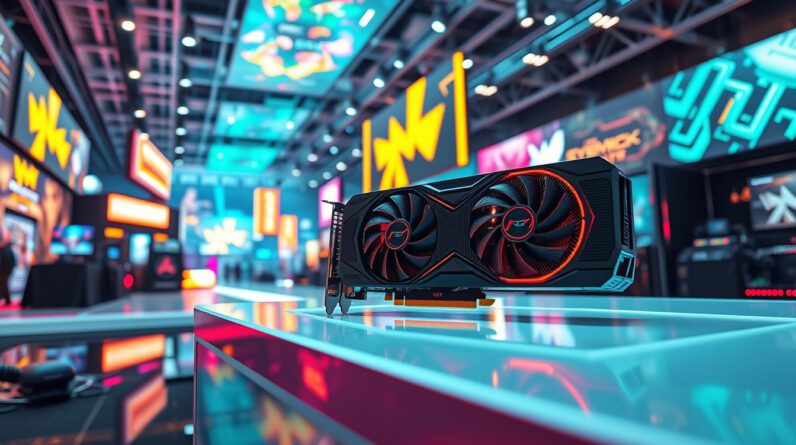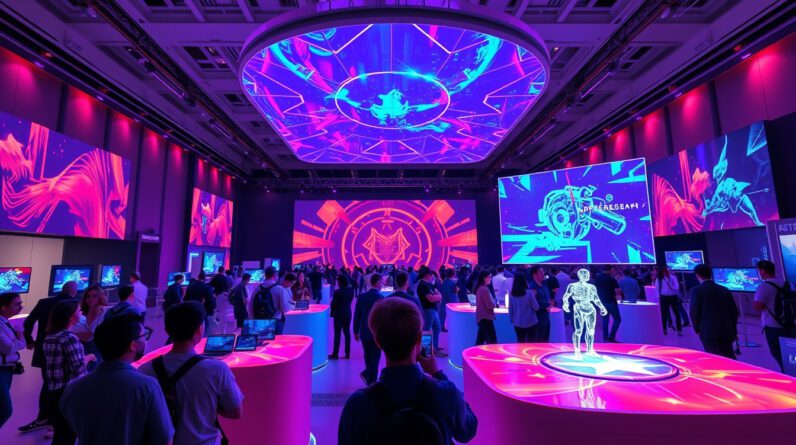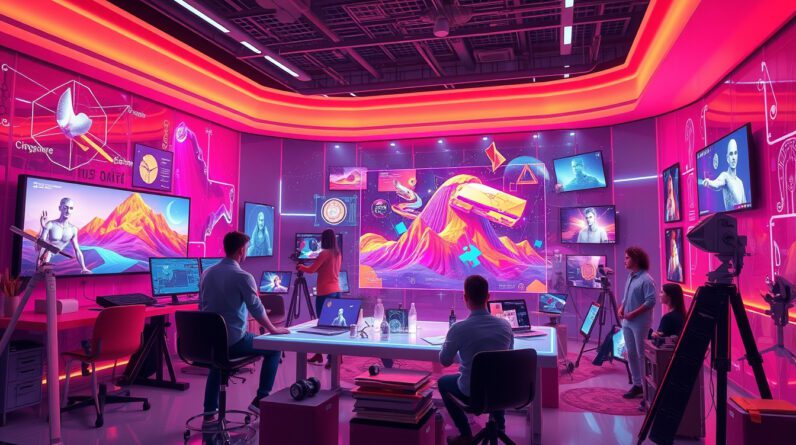
At the Game Developers Conference (GDC) 2025, Nvidia made waves in the gaming industry with the unveiling of its GeForce RTX 50-series, a significant step forward in gaming graphics technology. Highlighting its enhanced Zorah demo, Nvidia illustrated how full ray tracing has become the cornerstone of modern graphics rendering, moving away from the traditional rasterization methods that once dominated the scene. This transition not only signifies a monumental shift in how games are developed and experienced but also sets new benchmarks for performance and visual fidelity in the gaming landscape. With advancements like RTX neural rendering and AI-driven techniques, Nvidia’s innovative approach aims to revolutionize how gamers interact with virtual worlds, marking a new era for graphics technology.

Takeaways
- Nvidia’s RTX 50-series marks a significant shift to full ray tracing, outperforming traditional rasterization methods.
- AI technologies, including RTX Neural Rendering and RTX Neural Materials, are essential for enhancing the efficiency and quality of graphics rendering.
- The gaming industry is increasingly leaning towards AI-driven solutions, with competitors like AMD and Intel also focusing on these advancements.
The Transition from Rasterization to Full Ray Tracing
The gaming and graphics industry is experiencing a seismic shift with the transition from traditional rasterization techniques to full ray tracing, marking a new era of visual fidelity and performance. At the 2025 Game Developers Conference (GDC), Nvidia unveiled its enhanced Zorah demo, particularly showcasing the robust capabilities of the new GeForce RTX 50-series. This demo significantly emphasizes the use of full ray tracing, underscoring that NVIDIA’s advancements have rendered rasterization outdated. To the surprise of many, the demo revealed that implementing ray tracing in Zorah results in quicker performance than the older rasterization methods.
John Spitzer, Nvidia’s VP of developer and performance technology, shed light on the critical importance of this shift, highlighting advanced features like RTX neural rendering and RTX Mega Geometry. These innovations allow for faster and more efficient graphics processing, enabling the realization of intricate and expansive game environments that rasterization alone could not handle. However, it is essential to acknowledge that while rasterization is becoming less prevalent, it is not entirely obsolete just yet, as Zorah continues to demand substantial computational resources to deliver its stunning visuals.
In this transformative landscape, AI technologies have emerged as pivotal in simplifying the rendering of complex graphics. Innovations such as RTX Neural Materials offer breathtaking renders of highly detailed surfaces, while the RTX Neural Radiance Cache enhances how light interacts within scenes. These AI-powered techniques are meticulously designed to generate real-time, visually convincing results, although they still face some imperfections.
The trend clearly signals a broader industry movement towards the integration of AI, with other major players like AMD and Intel also making significant investments in AI technologies within their graphics processing units. As AI solidifies its role as a cornerstone of graphics technology evolution, the possibilities for future games and applications are promisingly limitless.
AI’s Role in Enhancing Graphics Rendering
As AI continues to shape the future of graphics rendering, techniques such as machine learning and neural networks are revolutionizing how characters and environments are created and displayed. The utilization of AI allows for smarter algorithms that can predict lighting and material interactions in a scene, making it possible to render high-quality graphics in a fraction of the time traditional methods would require. This shift not only enhances realism but also ensures that developers can deliver visually stunning games that maintain high frame rates, crucial for an immersive gaming experience. Furthermore, the application of AI in graphics rendering doesn’t just stop at visuals; it extends to optimizing performance across various hardware platforms, ensuring that even those with lower-end systems can enjoy enhanced visual fidelity without compromising on speed. The collective industry commitment to AI-driven innovations signals that we are on the brink of a graphics renaissance, where the boundaries of creativity and technology blur, setting the stage for an exhilarating future in gaming and digital content.




